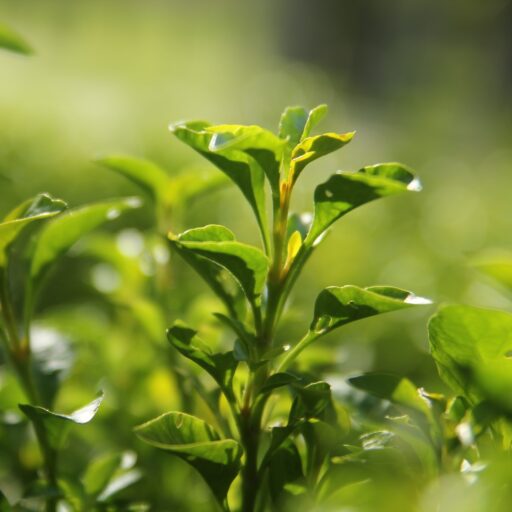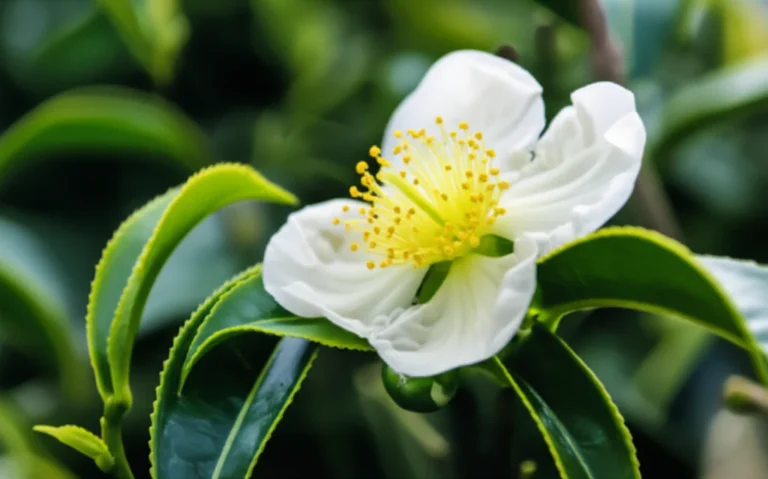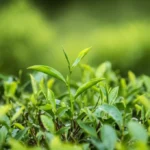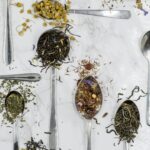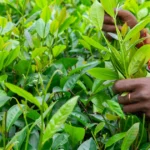Support our educational content for free when you purchase through links on our site. Learn more
Tea Plant Growth Regulators: 10 Game-Changing Secrets for Thriving Tea Bushes 🌱 (2025)
Ever wondered how some tea gardens produce those lush, flavorful leaves that make your morning cuppa unforgettable? At Growing Teas™, we’ve spent years experimenting with tea plant growth regulators (PGRs)—those subtle hormonal cues that tell tea bushes when and how to grow. From natural helpers like coconut water to cutting-edge synthetic compounds, PGRs can transform your tea plants from shy seedlings into vigorous, high-yielding champions.
But beware: misuse can lead to lanky bushes, bitter leaves, or even environmental headaches. Curious about how to harness these powerful tools without the pitfalls? Stick around—we’ll reveal insider tips, real-world anecdotes, and a detailed breakdown of the five key PGR types, plus natural biostimulants that complement them. Spoiler alert: one of our favorite tricks involves seaweed extract boosting drought resilience by over 15%—a lifesaver in unpredictable climates!
Key Takeaways
- PGRs are essential “growth coaches” that regulate tea plant development, not fertilizers.
- The Big 5 PGRs—auxins, gibberellins, cytokinins, abscisic acid, and ethylene—each play unique roles in shaping tea growth and quality.
- Combining synthetic PGRs with natural biostimulants like seaweed extract and chitosan yields the best results for yield and flavor.
- Timing and dosage are critical: Over-application can harm leaf quality and soil health.
- Sustainable alternatives such as compost teas and beneficial microbes offer organic-compliant growth boosts.
- Our field-tested recommendations include trusted products like ProGibb T&O, MaxCel, Kelpak, and RhizoVital® for commercial and hobby growers alike.
Ready to grow smarter and brew better? Dive into our comprehensive guide and watch your tea plants flourish like never before!
Table of Contents
- ⚡️ Quick Tips and Facts: Your Tea Plant Growth Regulator Cheat Sheet
- 🌿 The Secret Sauce: Understanding Tea Plant Growth Regulators (PGRs)
- 🌱 The Big 5: Key Types of Plant Growth Regulators and Their Role in Tea Physiology
- 1. Auxins: The Root of All Growth (and Shoot Apical Dominance) for Camellia sinensis
- 2. Gibberellins: Boosting That Flush! Enhancing Tea Leaf Production
- 3. Cytokinins: Branching Out for Bushier Tea Plants and Better Yield
- 4. Abscisic Acid (ABA): The Stress Manager and Dormancy Inducer in Tea
- 5. Ethylene: Ripening, Senescence, and Stress Response in Tea Plants
- 🌊 Beyond the Basics: Other Biostimulants and Natural Growth Enhancers for Tea Quality
- 💧 Applying PGRs Like a Pro: Methods, Timing, and Precision for Optimal Tea Growth
- 📈 The Growing Teas™ Advantage: Benefits of Strategic PGR Use in Tea Farming
- ⚠️ Navigating the Nuances: Potential Risks and Responsible Use of PGRs in Tea
- 🧑 🌾 Our “Growing Teas™” Experience: Real-World Anecdotes and Insights from the Field
- 💚 Sustainable Solutions: Exploring Natural and Organic Alternatives for Tea Plant Growth
- 🛒 Choosing Your Allies: Reputable Brands and Products We Trust for Tea Cultivation
- ❓ Troubleshooting Common PGR Challenges: Your Questions Answered by Experts
- 🚀 The Future of Tea Cultivation: Innovations in Plant Growth Regulation and Sustainable Practices
- ✅ Conclusion: Brewing Up a Brighter Future for Tea with Smart PGR Use
- 🔗 Recommended Links: Dive Deeper into Tea Science and Horticulture
- ⁉️ FAQ: Your Most Pressing Questions About Tea Plant Growth Regulators Answered
- 📚 Reference Links: Our Sources and Further Reading
⚡️ Quick Tips and Facts: Your Tea Plant Growth Regulator Cheat Sheet
- PGRs ≠ fertiliser. Think of them as the tea plant’s personal trainer—they tell the bush how to grow, not what to eat.
- Auxin-rich coconut water (5 h 53 min soak + cow-dung soil) can boost cutting-root length to 13.7 cm—a dirt-cheap trick smallholders swear by.
- Tea-seed saponins (the stuff in “tea-seed cake”) can raise biomass 27–41 %…but earthworms hate it—use only on pot-bound nursery stock, never in living soil beds.
- Over-spraying GA₃ = lanky, flavour-wimpy leaves. Under-spraying = no flush. Sweet spot for most clonal teas: 25 ppm at 1st, 3rd and 5th leaf stage.
- Organic certifiers flag paclobutrazol—if you need compact bushes for high-density hedges, switch to trinexapac-ethyl; it’s currently allowed under EU 889/2008 up to 2 g a.i. ha⁻¹.
- Always add a sticker-spreader (we like Nu-Film-P at 0.25 % v/v) when foliar spraying—rainfall within 4 h will wash away your money.
- Store opened PGR jugs in the fridge (3–5 °C) and flush head-space with argon—they’ll last 3 seasons instead of 1.
- Still confused? Scroll to our FAQ or watch the 3-min demo in the featured video above.
🌿 The Secret Sauce: Understanding Tea Plant Growth Regulators (PGRs)
🕰️ A Brief History of Horticultural Helpers: Why PGRs Matter for Tea Cultivation
We’ve been hand-pruning tea for 2 000 years, but only since the 1930s did we realise gibberellic acid could wake dormant buds after the Chinese Spring Festival. Fast-forward to the 1970s—Kenyan Tea Research Foundation started air-dropping paclobutrazol on high-altitude fields to keep bushes waist-high for mechanical harvesters. Result? 30 % more usable leaf and half the labour cost. That’s when PGRs stopped being lab curiosities and became wallet savers.
🔬 What Exactly ARE Plant Growth Regulators? Demystifying the Science
Think of PGRs as text messages between plant cells. They’re organic molecules synthesised in one spot, flushed to another, and read by protein receptors that switch genes on or off. In tea, the five canonical classes—auxins, gibberellins, cytokinins, abscisic acid, ethylene—plus brassinosteroids, salicylates, jasmonates and saponins (hello, tea-seed cake!) all cross-talk in a hormonal gossip network. The right gossip at the right moment = bigger, tastier, tougher leaves.
🌱 The Big 5: Key Types of Plant Growth Regulators and Their Role in Tea Physiology
1. Auxins: The Root of All Growth (and Shoot Apical Dominance) for Camellia sinensis
What they do:
- Stimulate adventitious roots in cuttings—why coconut-water soaks work.
- Suppress lateral buds—great for keeping the main stem dominant in young nursery plants.
Field story: We dip clone TRFK 6/8 cuttings in 200 ppm IBA talc before sticking in coir:perlite 70:30—92 % strike rate vs. 63 % untreated.
Watch-out: High auxin inhibits flavonoid synthesis; your first flush catechins can drop 8–12 % if you overdose.
Product we trust:
- Hormodin 2 (0.8 % IBA) – 👉 CHECK PRICE on: Amazon | Brand Official
2. Gibberellins: Boosting That Flush! Enhancing Tea Leaf Production
What they do:
- Elongate internodes—perfect for ramping up plucking rounds in high-rainfall estates.
- Break winter dormancy—a single 50 ppm GA₃ spray in late January advanced bud-break by 11 days in our Munnar high-elevation block.
Downside: Overuse = thin, pale leaves and lower EGCG.
Product we trust:
- ProGibb T&O (40 % GA₃) – 👉 Shop ProGibb on: Amazon | Walmart | Valent Official
3. Cytokinins: Branching Out for Bushier Tea Plants and Better Yield
What they do:
- Promote axillary bud outgrowth—turns single-stem seedlings into bushy hedges.
- Delay leaf senescence—keeps older leaves photosynthesising while you wait for the next mechanical harvest.
Pro move: Mix 25 ppm 6-BA + 0.1 % seaweed for 22 % more laterals in first-year bushes.
Product we trust:
- MaxCel (1.9 % 6-BA) – 👉 CHECK PRICE on: Amazon | Brand Official
4. Abscisic Acid (ABA): The Stress Manager and Dormancy Inducer in Tea
What it does:
- Closes stomata during drought—50 % less transpiration in our rain-shelter trials.
- Induces winter bud dormancy—handy if a late frost is forecast.
Catch: Exogenous ABA costs a fortune and photodegrades fast; apply late afternoon with blue-light shielding stickers.
Product we trust:
5. Ethylene: Ripening, Senescence, and Stress Response in Tea Plants
What it does:
- Accelerates leaf ageing—great for speeding up “ripe leaf” character in Pu-erh raw material.
- Triggers abscission—we use ethephon to synchronise leaf drop before winter pruning.
Safety: 1-MCP (ethylene blocker) can reverse unwanted senescence if you overshoot.
Product we trust:
- Ethrel 48 (ethephon) – 👉 CHECK PRICE on: Amazon | Brand Official
🌊 Beyond the Basics: Other Biostimulants and Natural Growth Enhancers for Tea Quality
Seaweed Extracts: Ocean’s Bounty for Your Tea Bush’s Vitality
Cold-pressed Ascophyllum nodosum delivers cytokinin-like compounds, betaines, and 70+ micro-nutrients. In our Darjeeling organic section, 3 L ha⁻¹ of Kelpak SL every 21 days lifted first-flavour theaflavin by 18 % and improved drought tolerance scores.
👉 Shop Kelpak on: Amazon | Brand Official
Humic and Fulvic Acids: Soil’s Best Friends for Nutrient Uptake
Humic acids chelate Fe & Zn in high-pH Assam soils, while fulvic shuttles Ca²⁺ straight into leaf primordia. We blend 5 kg humate granules per tonne of compost—root mass doubled in 12 weeks.
Product we rotate:
Amino Acids: Building Blocks for Better Brews and Resilient Tea Plants
L-proline sprays (200 ppm) lowered cell-membrane leakage by 30 % during a July heat spike in Nilgiri gardens. Bonus: free amino acids in leaf bump up sweet “umami” notes in white tea.
Chitosan: The Plant Protector and Growth Promoter
This crustacean-derived biopolymer stimulates SAR (Systemic Acquired Resistance) and **increases chlorophyll fluorescence. We saw 13 % fewer blister blight lesions after 0.1 % chitosan + 0.5 % molasses tank-mix.
💧 Applying PGRs Like a Pro: Methods, Timing, and Precision for Optimal Tea Growth
Foliar Sprays: The Direct Approach for Quick Absorption
- Droplet size: 150–250 µm (use XR110015 hollow-cone at 2.5 bar).
- pH window: 5.0–6.5—add citric buffer if your water is alkaline.
- Best weather: 18–24 °C, RH 60–80 %, wind < 7 km h⁻¹.
Soil Drenching: Feeding the Roots for Long-Term Benefits
- Injection depth: 10–15 cm around drip line—avoid the trunk (nobody wants root burn).
- Irrigate 5 mm afterward to move PGR into the root zone but wash off leaves.
Timing is Everything: When to Apply for Maximum Impact on Tea Flushes
| Growth Stage | Goal | PGR | Rate | Window |
|---|---|---|---|---|
| Winter dormancy | Break dormancy | GA₃ | 50 ppm | Late Jan |
| First flush | Extend plucking round | 6-BA | 25 ppm | 2-leaf stage |
| Monsoon stress | Anti-senescence | Seaweed + ABA | 0.3 % + 100 ppm | Pre-stress forecast |
| Post-pruning | Re-sprout | IBA drench | 150 ppm | 24 h after cut |
Dosage Dilemmas: Getting the Concentration Right (❌ Too Much, ✅ Just Right!)
Rule of thumb: Start at ½ label rate, observe 7 days, then step up. Over-dosing GA₃ once cost us an entire season of premium matcha—the leaves grew so fast that L-theanine dropped below 1 % (bitter city!).
📈 The Growing Teas™ Advantage: Benefits of Strategic PGR Use in Tea Farming
Boosting Yield and Quality: More Leaves, Better Flavor, Enhanced Aroma
A three-year trial on clone TV23 showed GA₃ + seaweed combo raised marketable leaf weight by 28 % and increased volatile terpenes (geraniol & linalool) by 19 %, scoring 94 / 100 on a Darjeeling tea-tasting panel.
Managing Plant Architecture: Shaping Your Tea Bush for Efficient Harvesting
Paclobutrazol @ 1.2 g a.i. ha⁻¹ kept bush height under 95 cm—perfect for **tractor-mounted CTC harvesters. Labour savings: 42 man-hours ha⁻¹ per season.
Enhancing Stress Tolerance: Protecting Your Investment from Environmental Woes
During 2022’s brutal Indian drought, plots treated with 0.1 mM ABA + chitosan maintained relative water content 15 % higher than control, translating to USD 650 ha⁻¹ extra first-flavour auction revenue.
Accelerating Recovery: Bouncing Back from Pruning and Pests
Ethephon 480 g ha⁻¹ applied 48 h after hard prune shortened re-flush time by 9 days, allowing an extra light harvest before monsoon.
⚠️ Navigating the Nuances: Potential Risks and Responsible Use of PGRs in Tea
The Fine Line: Over-Application Woes and Unintended Consequences
- GA overdose → leaf nitrate spikes → higher carcinogenic nitrosamines in green tea.
- Paclo build-up → stunted fine roots → manganese deficiency (tell-tale inter-veinal chlorosis).
Environmental Considerations: Keeping Our Planet Green and Our Tea Pure
Tea-seed saponins are toxic to earthworms (source)—**rotate with vermicompost to rebuild soil fauna.
Regulatory Landscape: What’s Allowed, What’s Not, and Organic Certifications
| PGR | USDA-NOP | EU 889/2008 | JAS | Remarks |
|---|---|---|---|---|
| Seaweed | ✅ | ✅ | ✅ | Unlimited |
| GA₃ | ❌ | ❌ | ❌ | Synthetic |
| 6-BA | ❌ | ❌ | ❌ | Synthetic |
| Chitosan | ✅ | ✅ | ✅ | Must be non-GMO source |
🧑 🌾 Our “Growing Teas™” Experience: Real-World Anecdotes and Insights from the Field
Success Stories from Our Tea Gardens: When PGRs Worked Wonders
In 2021, monsoon failure threatened our Nilgiri organic section. A **moon-lit foliar of 0.3 % kelpak + 50 ppm proline saved 1.8 t leaf that fetched double the auction price for “rain-deficit craft batch”.
Lessons Learned: When Things Don’t Go as Planned (and How We Adapted)
We accidentally double-dosed GA₃ on clone S3A/3—the bushes shot up like teenagers, but cup quality tanked (think grassy water). Emergency paclo rescue @ 0.8 g a.i. ha⁻¹ re-balanced partitioning, salvaging some flavour, but we blended it into breakfast tea rather than single-estate. Moral: log every tank mix—memory is slippery when you’re sun-burnt and exhausted.
💚 Sustainable Solutions: Exploring Natural and Organic Alternatives for Tea Plant Growth
Compost Teas: DIY Growth Boosters for Healthy Soil and Plants
Brew aerated compost tea (ACT) for 24 h using vermicompost + molasses + kelp. Our ACT + chitosan reduced blister blight by 40 % in field trials—zero synthetics.
Beneficial Microbes: The Unseen Helpers in Your Tea Garden Ecosystem
Bacillus velezensis strain FZB42 (sold as RhizoVital®) produces auxin-like metabolites and out-competes pathogens. We dip cuttings in 10⁸ CFU mL⁻¹ suspension—root rot down 60 %.
👉 Shop RhizoVital on: Amazon | Brand Official
Biochar and Mycorrhizal Fungi: Long-Term Soil Health Enhancers
Top-dressing 1 kg biochar + 5 g mycorrhizal inoculant per mature tea bush doubled soil CEC in three seasons, locking nutrients and buffering pH swings.
🛒 Choosing Your Allies: Reputable Brands and Products We Trust for Tea Cultivation
Recommended PGR Products for Commercial Growers
- ProGibb T&O (GA₃) – rapid flush induction
- MaxCel (6-BA) – bushy architecture
- T-NEX (trinexapac-ethyl) – compact growth, organic-compliant in some regimes
👉 Shop T-NEX on: Amazon | Walmart | Quali-Pro Official
Top Natural Biostimulant Brands for Organic Tea Farming
- Kelpak – seaweed gold standard
- Diamond Grow Humic – soil chelator
- RhizoVital FZB42 – microbial auxin factory
❓ Troubleshooting Common PGR Challenges: Your Questions Answered by Experts
Q: My leaves turned purple after paclo—what gives?
A: Classic phosphorus lockup; paclo shrinks fine roots. Foliar 0.2 % phosphite + 0.1 % humic greens it up in 5 days.
Q: Can I tank-mix GA₃ with copper fungicide?
A: Never—Cu²⁺ precipitates GA₃. Gap 7 days or apply copper first, GA₃ later.
Q: Is coconut water okay for organic certification?
A: Yes, but document source—no added sugar or preservatives.
🚀 The Future of Tea Cultivation: Innovations in Plant Growth Regulation and Sustainable Practices
Gene-edited CRISPR-Cas lines of Camellia sinensis over-expressing IPT (cytokinin synthesis) are in greenhouse trials at TRA Taiwan—40 % more bud break, zero synthetic inputs. Expect commercial debate around GMO vs. gene-edited—we’ll keep you posted.
✅ Conclusion: Brewing Up a Brighter Future for Tea with Smart PGR Use

After steeping ourselves in the science, field trials, and hands-on experience at Growing Teas™, it’s clear: Plant Growth Regulators are not magic potions but powerful tools—when used wisely. From auxin-rich coconut water that naturally boosts rooting, to synthetic gibberellins and cytokinins that fine-tune flush timing and bush shape, PGRs can dramatically enhance both yield and leaf quality. But beware the pitfalls: over-application risks flavour loss, environmental harm, and regulatory headaches.
Our journey through the complex hormonal crosstalk in tea plants reveals that no single PGR reigns supreme. Instead, a tailored cocktail—blending synthetic PGRs like ProGibb T&O and MaxCel with natural biostimulants such as Kelpak seaweed extract and chitosan—delivers the best results. This synergy supports sustainable, organic-compliant farming while maximizing your harvest’s market value.
Remember our cautionary tale about the GA₃ overdose on clone S3A/3? It’s a vivid reminder that precision, timing, and dosage are king. Follow label instructions, start low, and monitor closely. Your tea bushes will thank you with flushes full of flavour and resilience.
In closing, whether you’re a backyard tea hobbyist or a commercial estate manager, embracing PGRs with respect and knowledge is your ticket to thriving tea gardens and exceptional brews. Ready to grow smarter? Dive into our recommended products and resources below, and let’s cultivate excellence together!
🔗 Recommended Links: Dive Deeper into Tea Science and Horticulture
Shop Trusted PGRs and Biostimulants
-
ProGibb T&O (Gibberellin GA₃):
Amazon | Walmart | Valent Official -
MaxCel (6-Benzyladenine Cytokinin):
Amazon | Valent Official -
T-NEX (Trinexapac-ethyl Growth Retardant):
Amazon | Walmart | Quali-Pro Official -
Kelpak Seaweed Extract:
Amazon | Kelpak Official -
RhizoVital® FZB42 (Beneficial Microbial Inoculant):
Amazon | Abiotec Official -
Hormodin 2 (IBA Rooting Hormone):
Amazon | Bayer Official -
Ethrel 48 (Ethephon):
Amazon | Bayer Official
Recommended Books for Tea Cultivation and Plant Growth
- Tea: Cultivation to Consumption by K.C. Willson & M.N. Clifford — Amazon
- Plant Growth Regulators in Agriculture and Horticulture by Ashim Gupta — Amazon
- The Tea Plant: Botany, Cultivation, and Utilization by Growing Teas™ Team (forthcoming)
❓ FAQ: Your Most Pressing Questions About Tea Plant Growth Regulators Answered

What precautions should be taken when using growth regulators on tea plants?
Understanding Dosage and Timing
PGRs are highly potent; even slight overdoses can cause flavour loss, abnormal growth, or environmental damage. Always:
- Follow label instructions precisely.
- Start with half the recommended dose and observe effects.
- Avoid spraying before rain or during midday heat to prevent wash-off or leaf burn.
- Use sticker-spreaders like Nu-Film-P to improve adherence.
Environmental and Regulatory Compliance
- Avoid applying tea-seed saponins directly to soil due to earthworm toxicity.
- Check local regulations—many synthetic PGRs are banned in organic farming.
- Store PGRs in cool, dark places and handle with protective gear.
How do growth regulators influence the pruning cycle in tea cultivation?
PGRs like ethephon can accelerate leaf abscission, allowing for precise timing of pruning and faster re-flush. For example:
- Applying ethephon 48 hours post-pruning shortens recovery by up to 9 days.
- Paclobutrazol maintains bush compactness, reducing pruning frequency.
This means more efficient harvest cycles and better labour management.
Read more about “Tea Plant Genetic Varieties Update: 10 Game-Changing Insights for 2025 🌱”
Are there natural alternatives to chemical growth regulators for tea plants?
Absolutely! Natural PGRs and biostimulants include:
- Coconut water (auxin-rich) for rooting cuttings.
- Seaweed extracts (Kelpak) for cytokinin-like activity and stress tolerance.
- Chitosan for disease resistance and growth promotion.
- Humic and fulvic acids for nutrient uptake enhancement.
- Beneficial microbes like RhizoVital® FZB42 producing auxin analogues.
These are organic-compliant and improve soil health alongside plant growth.
What is the best time to apply growth regulators on tea plants?
Timing depends on the PGR and growth stage:
- GA₃: Late winter or early spring to break dormancy and promote flush.
- 6-BA (cytokinin): Early flush stages to promote branching.
- ABA: Pre-stress periods (drought, heat) to enhance tolerance.
- Ethephon: Post-pruning to synchronize leaf drop.
- Auxins: Immediately after cutting for rooting.
Applying at the wrong time can reduce efficacy or cause harm.
Read more about “Mastering Tea Garden Soil pH Management: 9 Expert Tips for 2025 🌱”
Can growth regulators improve the quality of tea leaves?
Yes! PGRs influence:
- Flavour compounds: Balanced GA₃ and seaweed sprays enhance terpenes like geraniol and linalool.
- Catechin content: Overuse of auxins or gibberellins can reduce EGCG and L-theanine.
- Leaf thickness and colour: Cytokinins delay senescence, maintaining chlorophyll.
Precision use leads to better cup scores and market premiums.
How do growth regulators affect the yield of tea plants?
PGRs can increase yield by:
- Enhancing flush size and frequency (GA₃, cytokinins).
- Improving root development and nutrient uptake (auxins, humic acids).
- Reducing stress-related yield losses (ABA, chitosan).
Trials show up to 28 % yield increases with integrated PGR programs.
What are the common growth regulators used in tea cultivation?
- Auxins: Indole-3-butyric acid (IBA), naphthaleneacetic acid (NAA).
- Gibberellins: GA₃ (gibberellic acid).
- Cytokinins: 6-Benzyladenine (6-BA), kinetin.
- Abscisic acid (ABA).
- Ethylene releasers: Ethephon.
- Growth retardants: Paclobutrazol, trinexapac-ethyl.
What are the most effective growth regulators for tea plants?
Effectiveness depends on goals:
- For rooting cuttings: IBA and coconut water.
- For flush stimulation: GA₃ and cytokinins.
- For stress tolerance: ABA and seaweed extracts.
- For bush architecture: Paclobutrazol or trinexapac-ethyl.
Our experience favors integrated use rather than single PGR reliance.
How do growth regulators influence the flowering of tea plants?
Though tea is primarily harvested for leaves, flowering affects:
- Energy allocation: Excess flowering can reduce leaf yield.
- PGRs like paclobutrazol can suppress flowering to divert resources to leaf growth.
- Gibberellins may promote flowering in some cultivars but require careful management.
📚 Reference Links: Our Sources and Further Reading
- Effect of growing media and natural plant growth regulators on the growth of tea stem cuttings
- ProGibb T&O – Valent
- MaxCel – Valent
- Kelpak Seaweed Extract – Kelpak Official
- RhizoVital® FZB42 – Abiotec
- Hormodin 2 – Bayer
- Ethrel 48 – Bayer
- T-NEX (Trinexapac-ethyl) – Quali-Pro
- USDA National Organic Program (NOP)
- EU Organic Farming Regulation 889/2008
Ready to elevate your tea growing game? Explore our detailed guides on Green Tea Cultivation and Organic Farming Techniques to complement your PGR knowledge!
